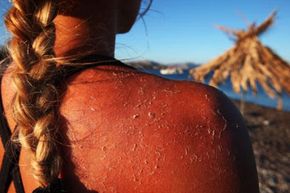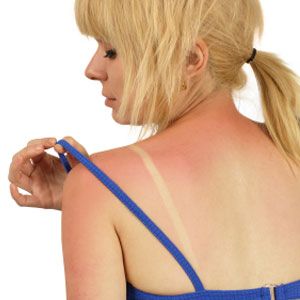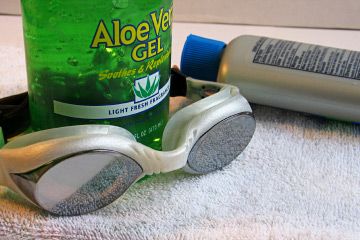After a long, bleak winter, most people can't wait to go outside for the first warm spring day to soak up the sun. And the sun, in addition to other benefits, like making life on Earth possible, can be good for our health. In moderate doses, sun exposure is a good source of vitamin D. However, it's also possible to get too much of a good thing.
The sun's rays are surprisingly powerful, and some of its most powerful rays -- called ultraviolet (UV) rays -- are actually invisible. It is these rays, and not the immediately perceptible warming rays, that are dangerous. Earth's ozone layer protects us from most of these harmful rays, but not all. When they hit us, UV rays penetrate dead skin cells (which make up our outer layer of skin) and damage living cells underneath. This can cause sunburn, which, if very severe, is called sun poisoning (the scientific name for both is photodermatitis).
Advertisement
UV rays can damage DNA and kill skin cells. It takes a few hours for your body to respond to the burn, which is why if you get a sunburn in the afternoon, you may not realize it till the evening. Your immune system reacts to this attack on your skin by expanding the blood vessels and sending blood to the burned areas (warming and reddening your skin). This allows white blood cells to enter and repair the damaged cells.
Your body also produces melanin, a pigment that is responsible for darkening the skin (tanning) and soaking up some radiation. Melanin production increases upon a few subsequent days of sun exposure, which is why it takes a few days to get a tan. A tan protects you from sunburn, but you can easily get a sunburn or sun poisoning before your body has time to develop a tan. Of course, this reaction can be dependent on your particular skin type, which we'll discuss more later.
We'll take the next few pages to discuss the symptoms, treatment and dangers of sun poisoning. And, most importantly, we'll talk about good prevention methods. Up first, though, how can you tell the difference between sunburn and sun poisoning?
Advertisement



